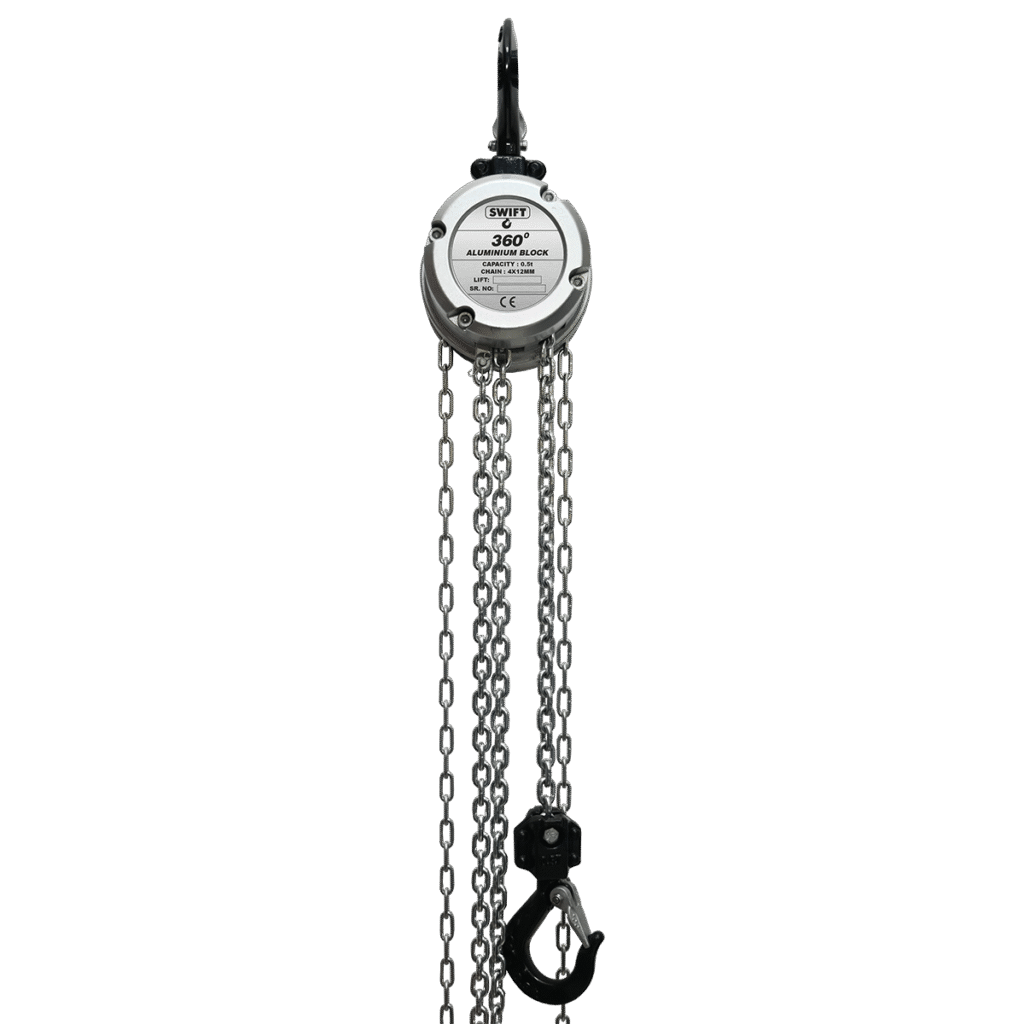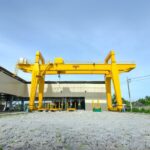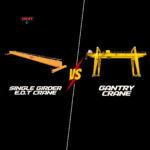Chain Pulley Blocks (CPBs) have been around for decades, trusted across industries for their ability to lift and move loads safely and efficiently. From factories and warehouses to construction sites and shipyards, these devices provide controlled lifting without the need for electricity. But like any material handling equipment, safety is paramount.
While many guides focus on the “dos” of operating chain pulley blocks, it’s equally important to understand the “don’ts.” Misuse and neglect are leading causes of accidents, equipment failures, and unnecessary downtime. This blog outlines the most critical safety checks and mistakes to avoid when using a chain pulley block ensuring your lifting operations remain smooth, reliable, and hazard-free.
Why Safety with Chain Pulley Blocks Matters
-
Accident Prevention: Even minor negligence can lead to falling loads, putting workers and infrastructure at risk.
-
Equipment Longevity: Misuse not only compromises safety but also shortens the service life of the equipment.
-
Compliance: Regulatory standards often require adherence to safety protocols during lifting operations.
-
Operational Efficiency: Safe practices reduce downtime caused by breakdowns or investigations after incidents.
Keeping these priorities in mind, let’s look at the don’ts every operator and supervisor must remember.
1. Don’t Overload the Chain Pulley Block
Overloading is one of the most common and dangerous mistakes.
-
Why it’s risky: Exceeding the Safe Working Load (SWL) can lead to chain breakage, gear damage, or catastrophic load drops.
-
How to avoid it: Always check the rated capacity marked on the equipment. Build a habit of leaving a margin above your heaviest load requirements to account for unexpected stresses.
-
Pro Tip: If in doubt, use a CPB with a higher load capacity instead of pushing the limits of a smaller one.
2. Don’t Use a Damaged or Worn-Out Chain
Chains are the backbone of a CPB, and even small defects can compromise lifting safety.
-
Common issues: Twisted links, rust, elongation, cracks, or visible wear.
-
Why it’s risky: A weakened chain may fail without warning during operation, putting lives at risk.
-
How to avoid it: Inspect the chain before every shift. Replace any damaged load chains immediately with manufacturer-approved spares.
3. Don’t Operate Without Checking the Hooks
Hooks carry the entire weight of the load, making their condition crucial.
-
Signs of concern: Bent, cracked, or worn hooks; missing or defective safety latches.
-
Why it’s risky: A hook without a latch or with excessive wear can cause the load to slip or detach.
-
How to avoid it: Ensure hooks are free from distortion and always equipped with functional safety latches. Never weld or repair hooks yourself—replace them with certified components.
4. Don’t Side-Pull or Angle the Load
Chain pulley blocks are designed for vertical lifting only.
-
What operators often do: Trying to move loads sideways or pulling at an angle to shift position.
-
Why it’s risky: Side-pulling puts uneven stress on chains and gears, leading to premature wear or sudden failure.
-
How to avoid it: Always align the block directly above the load. If horizontal movement is required, use appropriate trolleys or cranes instead.
5. Don’t Leave Loads Suspended Unattended
Leaving a load hanging for extended periods might seem convenient, but it’s a serious safety hazard.
-
Why it matters: Extended suspension puts constant stress on the block, brake, and chain. A sudden brake failure or environmental factor could lead to accidental release.
-
What to avoid: Don’t use a CPB as a permanent support system.
-
Best practice: Always lower the load safely onto a stable surface when the lifting task is complete.
6. Don’t Skip Regular Maintenance
Even the strongest CPB needs care.
-
Why it’s risky: Lack of lubrication, loose bolts, or ignored wear can cause sudden breakdowns.
-
How to avoid it: Follow a strict maintenance schedule. Keep records of inspections, servicing, and part replacements. Use only genuine spare parts for reliability.
7. Don’t Let Untrained Personnel Operate the CPB
A chain pulley block may look simple, but safe operation requires knowledge.
-
Why it’s risky: Inexperienced workers may overload, misuse, or bypass safety checks.
-
How to avoid it: Ensure only trained and authorized personnel operate the equipment. Regular refresher training should be part of your workplace safety culture.
8. Don’t Forget to Store and Handle Properly
How you store a CPB when not in use affects its longevity.
-
Common mistakes: Leaving the block outdoors, allowing chains to drag on the ground, or storing it in damp environments.
-
Why it’s risky: Exposure to elements can lead to rust, chain damage, and gear contamination.
-
How to avoid it: Store the block in a clean, dry space. Keep chains oiled and properly suspended to prevent kinks or tangles.
9. Don’t Ignore Safety Standards and Certification
Finally, never assume all blocks are created equal.
-
Why it’s risky: Using uncertified equipment may violate regulations and pose untested risks.
-
How to avoid it: Choose blocks that comply with recognised standards like IS 3832, CE, or EN 13157. Certification is your assurance of quality and safety.
10. Don’t Ignore the Brake System
The braking system ensures loads remain suspended safely when lifting stops.
-
What goes wrong: Overlooking worn or contaminated brake discs or pawls.
-
Why it’s risky: Brake failure can lead to uncontrolled load drops.
-
How to avoid it: Test the brake before lifting a heavy load. Schedule periodic inspections to clean, lubricate, and replace brake parts as per manufacturer guidelines.
Conclusion
A Chain Pulley Block is only as safe as the way it is used. Avoiding these common mistakes overloading, neglecting inspections, misusing components, or skipping maintenance—can drastically reduce risks while extending equipment life. By staying alert to these “don’ts,” you safeguard not only your operations but also the people who depend on them.
At SWIFT, we design our chain pulley blocks with robust safety features, certified compliance, and ease of maintenance because we understand that reliability begins with safety.
📩 For enquiries, write to us at: enquire@csil.in
📞 Call us at: +91 9403 89 2303.
Your lifting needs deserve equipment that puts safety first trust SWIFT to deliver both performance and peace of mind.






